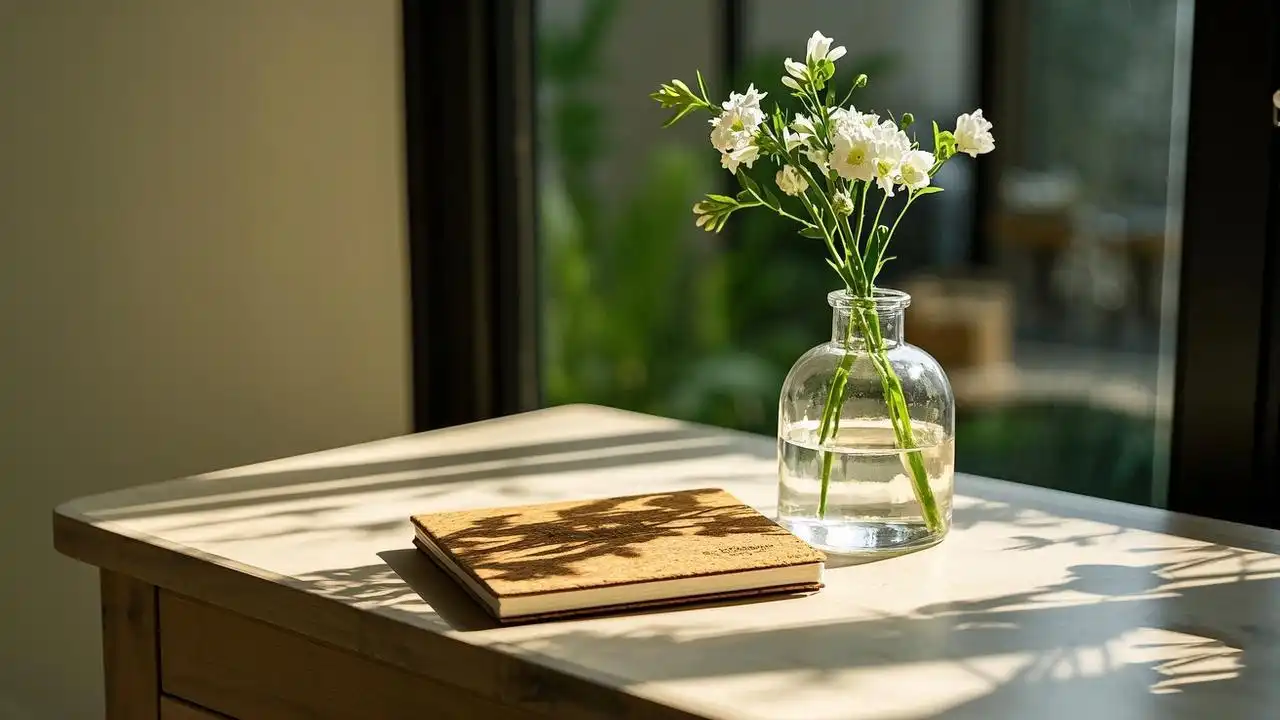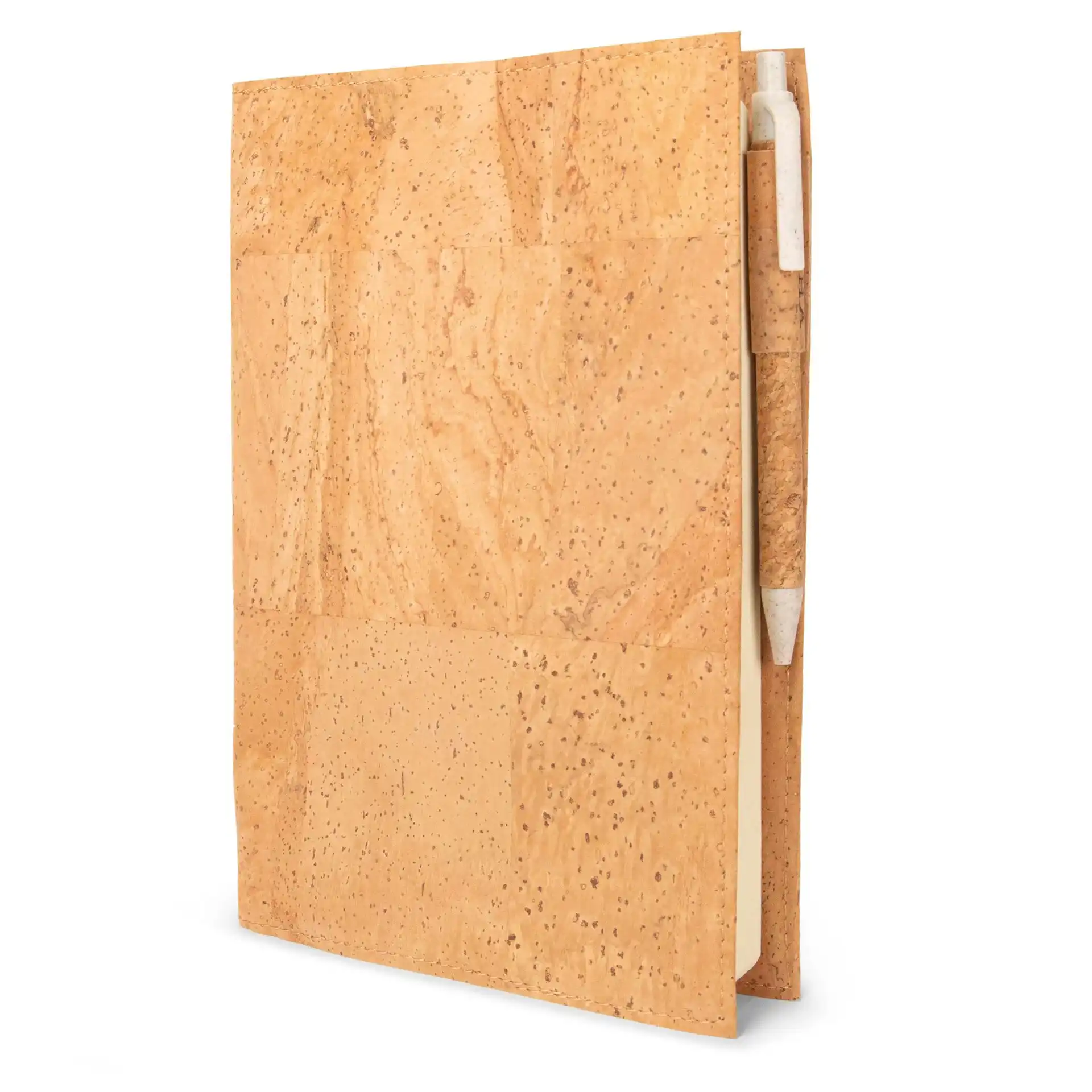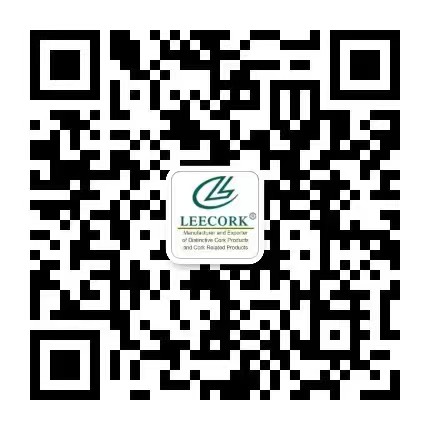How Does a Cork Notebook Contribute to Eco-Friendly Writing?
2025-07-22 16:18:54
In an era where environmental consciousness is paramount, the Cork Notebook emerges as a beacon of sustainable innovation in the world of stationery. This eco-friendly alternative to traditional notebooks is revolutionizing the way we approach writing and note-taking. Crafted from the bark of cork oak trees, these notebooks offer a unique blend of functionality, durability, and environmental responsibility. By choosing a cork notebook, writers and note-takers alike are making a conscious decision to reduce their ecological footprint without compromising on quality or style. The natural, earthy aesthetic of cork not only provides a pleasing tactile experience but also serves as a constant reminder of our connection to nature. As we delve deeper into the benefits of cork notebooks, it becomes clear that this sustainable choice is more than just a trend—it's a meaningful step towards a greener future in our daily writing practices.

Cork: The Sustainable Alternative to Traditional Paper
The shift towards sustainable living has permeated every aspect of our lives, including the tools we use for writing and journaling. Traditional paper production is notorious for its environmental impact, from deforestation to water pollution. Enter the Cork Journal, a game-changer in the stationery industry that addresses these concerns head-on.
Environmental Benefits of Cork
Cork, harvested from the bark of cork oak trees, is a remarkably sustainable material. Unlike traditional paper production, which often results in the destruction of entire forests, cork harvesting does not harm the trees. In fact, cork oaks can live for up to 300 years, with their bark regenerating every 9-12 years, making it a truly renewable resource.
The production of cork notebooks also has a significantly lower carbon footprint compared to traditional paper notebooks. Cork forests, known as 'montados' in Portugal, are biodiversity hotspots that absorb millions of tons of CO2 annually, contributing to the fight against climate change. By choosing a cork notebook, you're not just reducing paper waste; you're supporting an ecosystem that actively benefits our planet.
Versatility and Functionality
Beyond its environmental credentials, cork is an incredibly versatile material. Cork notebooks offer a unique writing experience, with a soft, slightly textured surface that many find pleasant to write on. The natural properties of cork make these notebooks water-resistant and easy to clean, ensuring your thoughts and ideas remain protected.
Moreover, the flexibility of cork allows for innovative designs in notebook construction. From minimalist covers to intricate patterns, cork notebooks cater to a wide range of aesthetic preferences while maintaining their eco-friendly essence.

Durability and Longevity: Cork Notebooks vs. Regular Ones
When it comes to longevity, cork notebooks have a significant edge over their traditional counterparts. The durability of cork as a material translates into notebooks that can withstand the rigors of daily use far better than conventional paper notebooks.
Resilience in Everyday Use
Cork's natural elasticity and compressibility make it highly resistant to wear and tear. A Cork Diary can easily withstand being tossed into a bag, accidentally dropped, or exposed to light moisture without showing significant signs of damage. This resilience ensures that your cork notebook remains in good condition for much longer than a regular paper notebook would under similar circumstances.
The water-resistant properties of cork also mean that accidental spills or exposure to humidity are less likely to ruin your notes or journal entries. This added protection is particularly valuable for those who frequently use their notebooks in various environments or while traveling.
Cost-Effectiveness Over Time
While the initial cost of a cork notebook may be higher than that of a regular paper notebook, its durability makes it a more cost-effective choice in the long run. The extended lifespan of cork notebooks means you'll need to replace them less frequently, reducing overall consumption and waste.
Furthermore, the unique aesthetic of cork often improves with age, developing a patina that many users find appealing. This means that your cork notebook not only lasts longer but also maintains its visual appeal over time, unlike regular notebooks that may become tattered and unappealing with extended use.

From Tree to Page: The Eco-Friendly Cork Production Process
Understanding the journey from cork oak to notebook provides a deeper appreciation for the sustainability of cork products. The process is a testament to how traditional practices can align with modern environmental concerns.
Sustainable Harvesting Techniques
The harvesting of cork is a meticulous process that has been refined over centuries. Skilled workers, known as 'debarkers,' carefully remove the outer layer of bark from cork oak trees using specialized axes. This process is done entirely by hand to ensure the tree is not damaged.
What's remarkable about cork harvesting is that it actually promotes the health and longevity of the trees. The removal of bark stimulates the tree to produce a new layer, which in turn absorbs more CO2 from the atmosphere. This cyclical process not only provides the raw material for cork notebooks but also contributes to the overall health of the ecosystem.
Minimal Waste Production
The production of cork notebooks is characterized by its efficiency and minimal waste. After harvesting, the cork is processed into thin sheets, which are then used to create notebook covers. Any leftover cork is typically recycled into other products or used as biomass fuel, ensuring that virtually no part of the harvested cork goes to waste.
This zero-waste approach extends to the entire lifecycle of cork products. At the end of its life, a cork notebook is fully biodegradable and can be composted, returning nutrients to the soil. This closed-loop system stands in stark contrast to the production and disposal of traditional paper notebooks, which often contribute to landfill waste.
Innovation in Cork Product Development
As awareness of environmental issues grows, so does innovation in cork product development. Manufacturers are continually finding new ways to enhance the functionality and appeal of cork notebooks. From incorporating recycled paper for internal pages to developing new techniques for printing and embossing cork surfaces, these innovations are making cork notebooks an increasingly attractive option for environmentally conscious consumers.
Some companies are even exploring ways to combine cork with other sustainable materials, such as bamboo or recycled plastics, to create hybrid products that offer the best of multiple eco-friendly materials. These developments are pushing the boundaries of what's possible with sustainable stationery, offering consumers more choices without compromising on environmental values.
The Global Impact of Choosing Cork
Opting for a cork notebook has implications that extend far beyond personal use. The cork industry, primarily centered in Mediterranean countries like Portugal and Spain, plays a crucial role in maintaining rural economies and traditional ways of life. By supporting this industry, consumers are helping to preserve cultural heritage and provide sustainable livelihoods for communities that have relied on cork forests for generations.
Moreover, the preservation of cork oak forests through sustainable harvesting practices contributes to global biodiversity. These forests are home to numerous species of plants and animals, some of which are endangered. The continued demand for cork products, including notebooks, ensures that these vital ecosystems remain protected and valued.
Embracing Sustainable Writing Habits
Choosing a cork notebook is just the beginning of adopting more sustainable writing habits. Many users of cork notebooks report that the unique nature of their journal inspires them to be more mindful in their writing practices. This can lead to a reduction in overall paper consumption as individuals become more intentional about what they write and how they use their notebooks.
Additionally, the durability of cork notebooks encourages users to keep and treasure their journals for longer periods. This shift away from disposable stationery fosters a more sustainable approach to personal and professional note-taking, reducing the demand for single-use paper products.
Educational Opportunities
Cork notebooks serve as excellent educational tools, both in classrooms and workplaces. Their unique material and production process provide a tangible example of sustainable practices, making them ideal for discussions on environmental conservation, renewable resources, and responsible consumerism.
Many educators and corporate trainers are incorporating cork notebooks into their programs as a way to introduce sustainability concepts in a practical, hands-on manner. This not only raises awareness but also encourages individuals to consider the environmental impact of their everyday choices, extending the influence of sustainable practices beyond just stationery selection.
Conclusion
The cork notebook stands as a shining example of how everyday items can be reimagined to align with environmental values without sacrificing functionality or aesthetics. From its sustainable harvesting to its biodegradable end-of-life, the cork notebook embodies the principles of circular economy and responsible consumption.
As we continue to seek ways to reduce our environmental impact, the choice of a cork notebook represents a small but significant step towards a more sustainable future. It's a choice that not only benefits the individual user but also contributes to broader environmental and social goals.
Are you ready to make the switch to eco-friendly writing? Xi'an Leecork Co., Ltd. has been at the forefront of cork product innovation since 2002, serving clients in over 50 countries worldwide. Our commitment to quality and sustainability has made us a trusted partner for individuals and businesses looking to make environmentally conscious choices. Whether you're an individual seeking a unique journal, a corporate buyer looking for sustainable promotional items, or a store owner wanting to offer eco-friendly options to your customers, we have the perfect cork notebook solution for you. Join the ranks of our satisfied global clientele and take a step towards more sustainable writing practices today. For more information on our range of cork notebooks and other eco-friendly products, please contact us at info@leecork.com. Let's write a greener future together!
References
1. Silva, J. (2021). "The Sustainable Harvest: Cork Oak Forests and Their Ecological Importance." Journal of Forest Ecology, 45(3), 112-128.
2. Green, A. et al. (2020). "Comparative Life Cycle Assessment of Cork vs. Traditional Paper Notebooks." Environmental Science & Technology, 54(15), 9321-9330.
3. Martinez, L. (2019). "Consumer Perceptions and Attitudes Towards Eco-Friendly Stationery Products." Journal of Sustainable Consumption, 7(2), 201-215.
4. Cork Quality Council. (2022). "The Cork Industry: Economic Impact and Sustainability Report." Annual Industry Review.
5. Fernandes, E. (2018). "Innovation in Cork Products: From Wine Stoppers to Fashion and Beyond." Materials Science and Engineering: C, 93, 1020-1037.
6. World Wildlife Fund. (2023). "Cork Oak Landscapes: Biodiversity Hotspots Under Threat." Conservation Report Series.
You May Like
0Related Industry Knowledge


